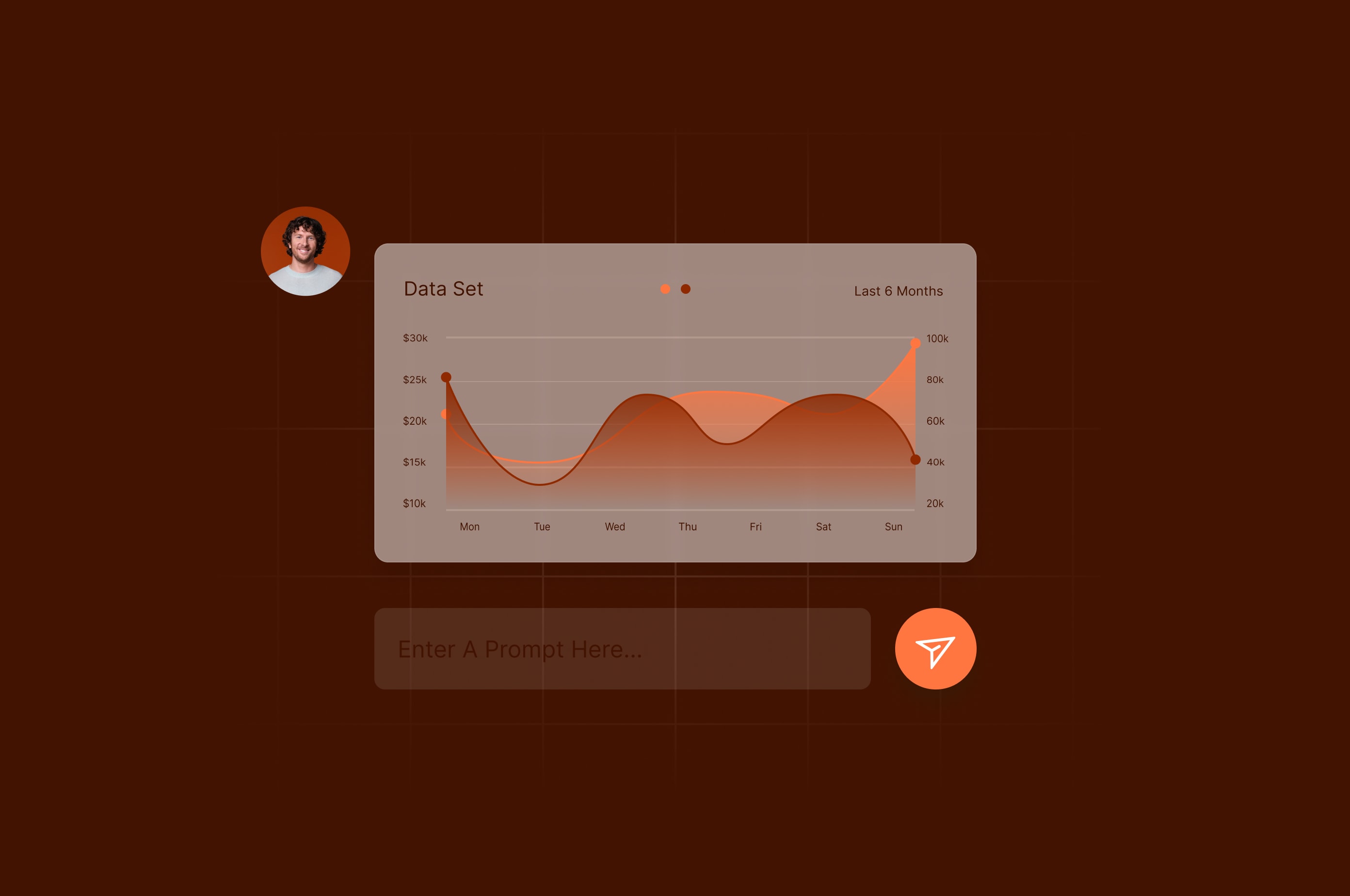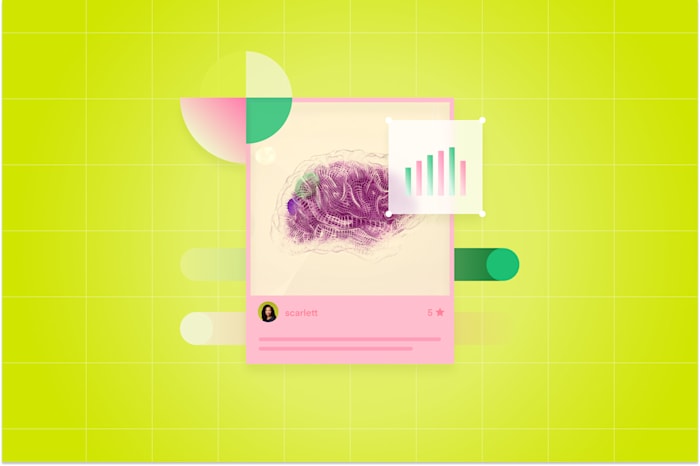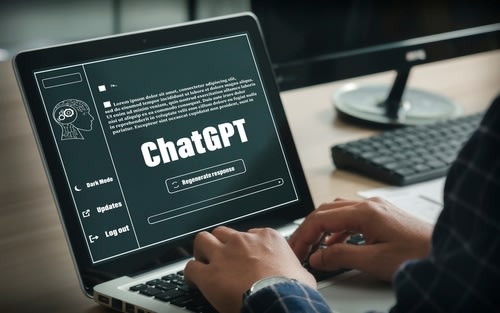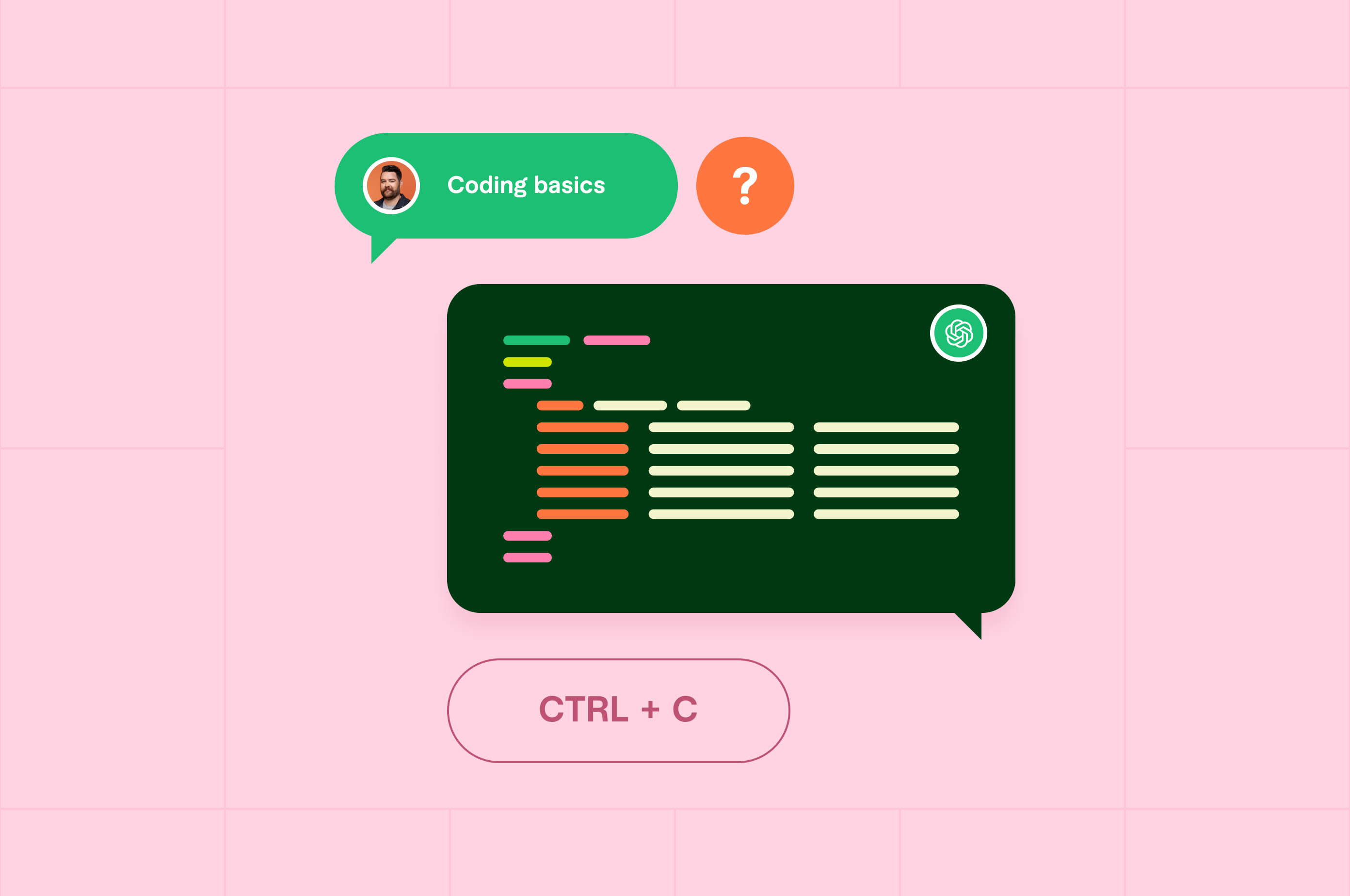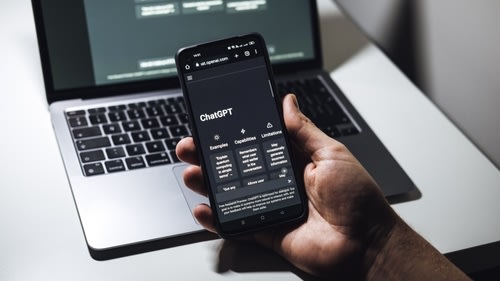Copilot vs ChatGPT: Which is Better for Your Needs?
Compare Microsoft’s Copilot and ChatGPT to choose the right AI tool for your needs.
 May 21, 2025
May 21, 2025 11 minute reading
11 minute reading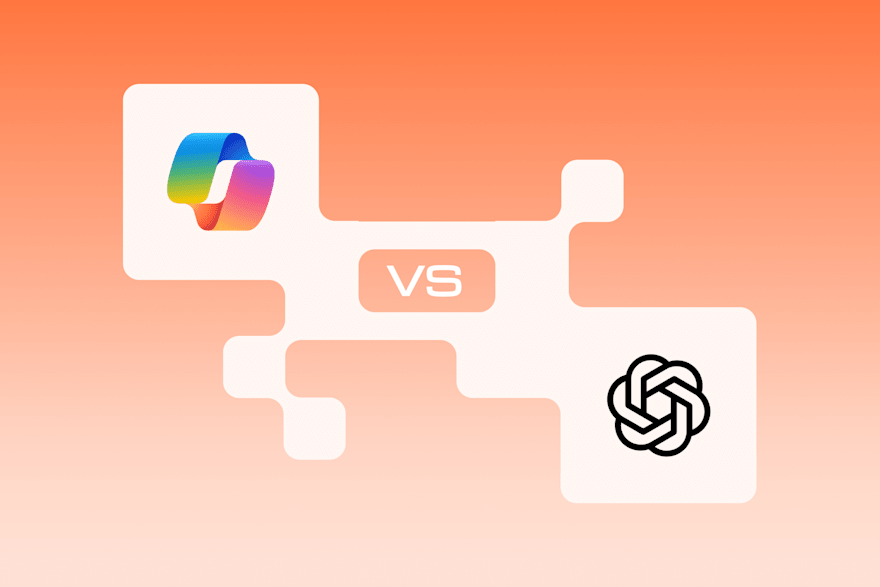
In all the flurry of AI assistants and services, one AI tool that gets little attention is Microsoft Copilot. Copilot is a chatbot initially powered by OpenAI’s ChatGPT-4 AI model but now stands on its own.
Most people know Copilot as part of Microsoft 365 Copilot, which integrates deeply into the Microsoft ecosystem and Microsoft apps. However, Copilot also offers a standalone chatbot version that rivals Gemini, ChatGPT, Claude, and other large language models (LLMs).
But is it better than ChatGPT?
We put ChatGPT and Copilot to a face-off, testing real use cases like coding assistance, content generation, brainstorming, and problem-solving. Here are our results and the key differences and similarities between these two tools.
What is Copilot?
Microsoft Copilot is a suite of AI-powered products that integrate deeply into the Microsoft ecosystem. You can find Copilot in Microsoft Office apps, new Windows 11 PCs, the Bing search engine, and even in GitHub, such as GitHub Copilot, which helps with software development.
Copilot uses the Microsoft Prometheus AI model based on OpenAI’s GPT-4. Microsoft fine-tuned it to provide real-time assistance within apps such as Word, Excel, PowerPoint, Outlook, and Teams.
Similar to how Gemini integrates with Google Drive and Gmail, Copilot provides the same functionality inside the Microsoft 365 suite of products.
Inside Microsoft 365, Copilot is a context-aware AI chatbot that can answer questions related to the Microsoft product you’re currently using.

Microsoft/Copilot
Copilot chat is available as a free version. Several paid versions exist for Copilot, and the different tiers are spectacularly confusing.
There’s a Copilot Pro license, which costs $20 per month, and then there’s a Copilot 365 personal license, which costs $9.99 per month but also includes the entire suite of Microsoft Office apps. After testing both, we don’t see why anyone would want to pay $20 for a standalone Copilot service when they could pay half that and get the entire Microsoft 365 service, including Copilot.
What is ChatGPT?
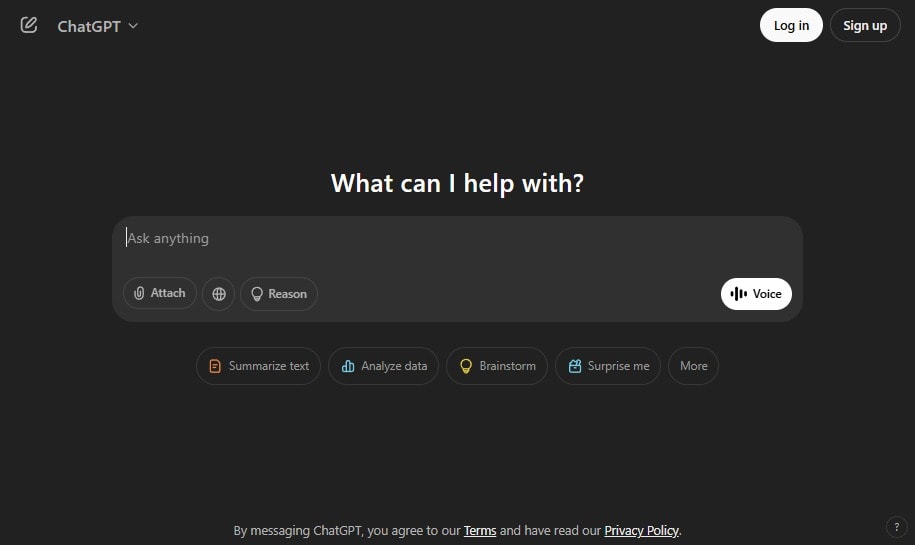
OpenAI/ChatGPT
ChatGPT was the first mainstream AI chatbot available. It was developed by OpenAI and uses a “transformer” architecture, a breakthrough AI architecture developed by eight Google employees. All major LLMs today use this transformer architecture, which excels at extracting context from natural language.
ChatGPT quickly became an internet sensation, and people started using it for content creation, brainstorming tasks, coding help, and other tasks. ChatGPT has evolved through several versions. The current multi-modal version can handle content in different formats, such as text, images, and voice.
The pricing model for ChatGPT is far more intuitive than that of Copilot.
ChatGPT offers three tiers:
ChatGPT Free
ChatGPT Plus (currently $20/month)
ChatGPT Pro (currently $200/month)
The Pro subscription offers unlimited queries, but you’ll unlikely hit those limits for average use. The Pro price made little sense when it was released, and it makes almost no sense now that Grok is on the market and offers limitless querying (for the moment).
Copilot vs. ChatGPT
Core capabilities and performance
Copilot
Copilot is geared toward increased productivity inside the Microsoft ecosystem. It integrates seamlessly into Microsoft Office apps. For example, you might use it to draft letters or rewrite paragraphs directly inside Microsoft Word.
In Excel, you can use it to create formulas or to summarize an entire table, as shown in the screenshot below. Using a single follow-up click, you can even get a deeper analysis of an Excel spreadsheet using the Python programming language, which Copilot automates.
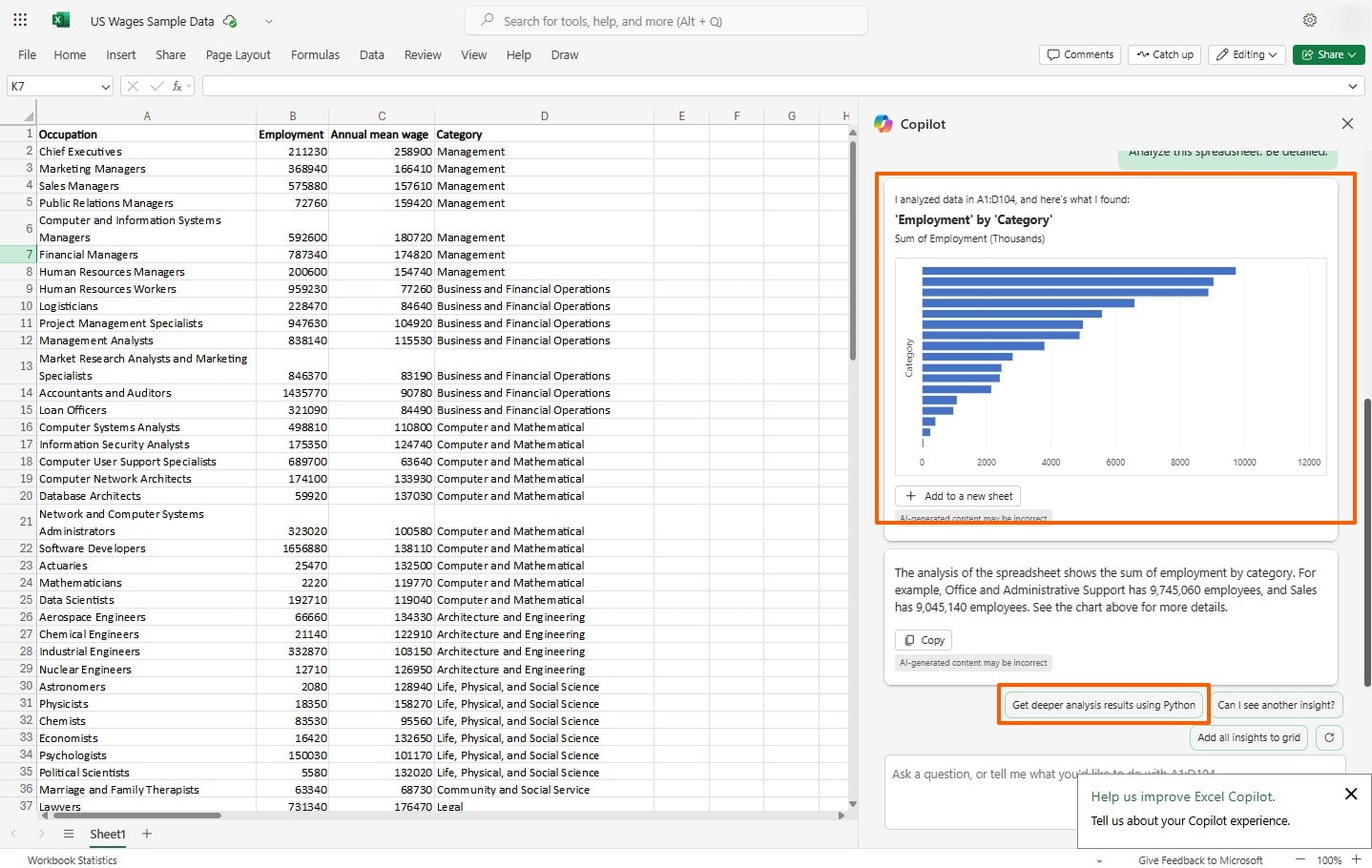
Microsoft
In Outlook, it summarizes conversations and helps you write messages.

Microsoft
On the web, Copilot can do everything expected of most artificial intelligence chatbots—write code, help you brainstorm, answer questions, and provide a chat-based user interface for various generative AI tasks.
Copilot also offers a voice chat mode.
Copilot generates images using OpenAI’s DALL·E model, which—until recently—struggled to produce realistic results. So, image quality may still be hit or miss.
However, OpenAI recently released a massive upgrade to its image-generation model, ditching DALL-E permanently for a new model that excels at creating photo-realistic images. Still, the new model doesn’t match the hype, which unfortunately accompanies every new AI release as companies vie for market share.
OpenAI made a big fuss about the fact that the new image-generation tool “generates text accurately.” Well, it looks like the underlying tool feeds any text in the prompt into a separate module that specifically generates text, not an “AI” module by the current understanding of the word.
ChatGPT's new image-generation tool's text feels “tacked on” rather than integrated with the rest of the image. Anyone hoping to get a professional design with fonts that match the image’s feel is better off getting graphic design services.
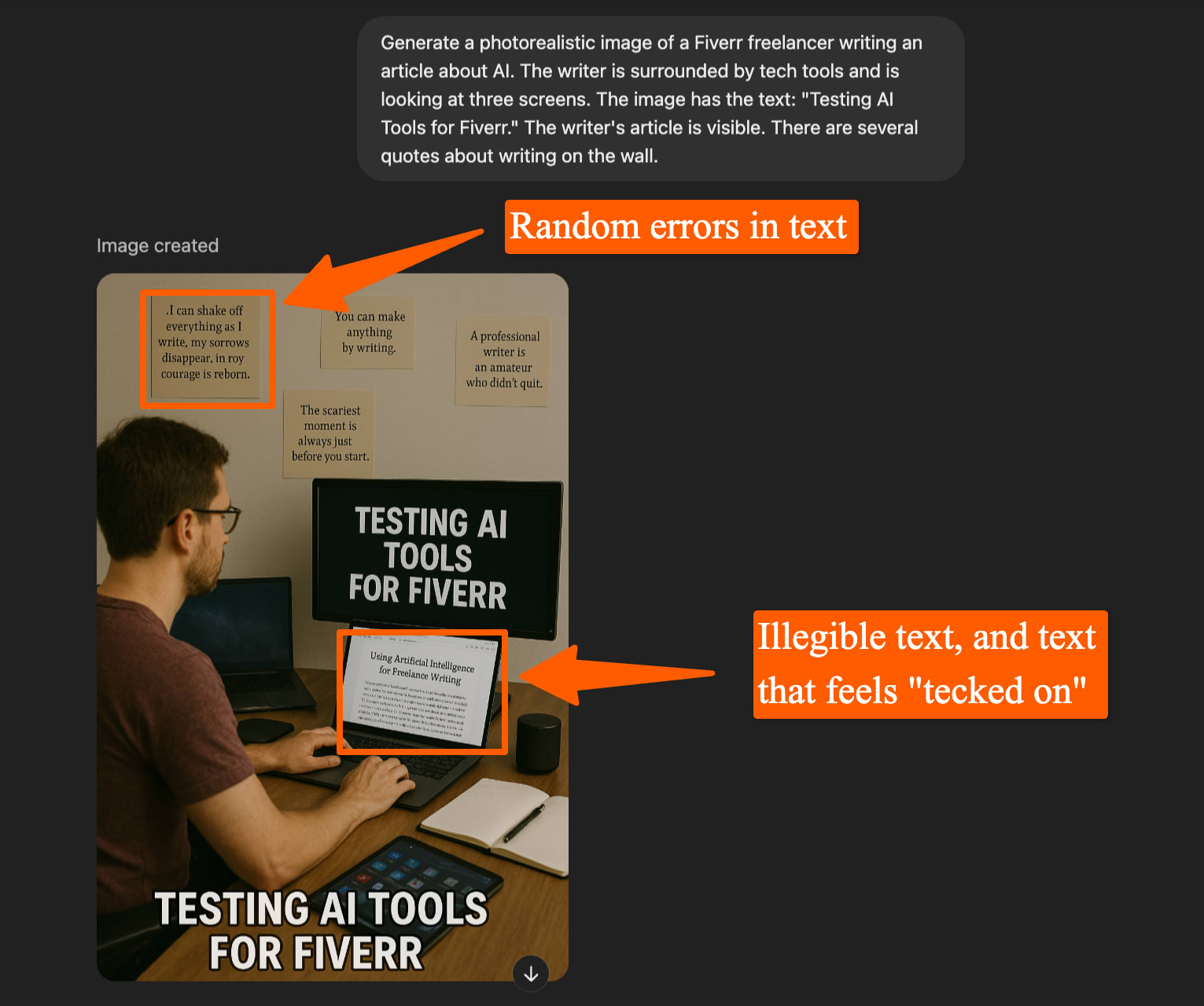
OpenAI
The irony about Copilot’s core capabilities is that they might just be ChatGPT’s capabilities with a facelift. Microsoft AI’s CEO recently posted on X that anyone could access OpenAI’s o1 reasoning model on Copilot for free.
We know that Copilot is powered by the Microsoft Prometheus Model, which is based on GPT-4 and has been fine-tuned by Microsoft for seamless integration into the Microsoft ecosystem. However, it’s unclear if Copilot will continue to use OpenAI’s latest models for new releases.
ChatGPT
ChatGPT’s core strength is its versatility. It lets you create images, write code, analyze files, and even create short videos. Its new image-generation tool creates highly realistic images, although the images still often contain inaccuracies. If you’re determined to use ChatGPT for image generation, we recommend getting AI image editing services to fix up any generated images so they look more professional.
Although users access it primarily through its chat-based interface, ChatGPT can be integrated into many other apps and services through its API.
If you don’t know how to integrate APIs yourself, you can get help from Fiverr’s many AI integrations development services.
For realistic image generation, ChatGPT is the best AI for the job. However, even with ChatGPT’s new model, we feel that Grok has better overall image-generation capabilities.
The latest ChatGPT model is GPT-4.5, which is still in research preview mode. The latest stable model is GPT-4o, where the “o” means “omni,” a hat-tip to the model’s ability to handle multimodal inputs and outputs.
ChatGPT used to support plugins to augment its functionality. This feature no longer exists and has largely been replaced by CustomGPTs.
User experience (UX)
Copilot
For any experienced AI user, Copilot’s web interface might feel minimalistic and lacking in features. It provides a textbox for prompts and only two models to choose from: “Quick” and “Think Deeper.” A “Discover” option exists, which leads to a confusing page that displays seemingly random topics. From a UX perspective, we first thought this page led to a CustomGPT feature for additional functionality.
Instead, these are just prompts in a fancy wrapper. Clicking one of the “Discover” cards leads to the same Copilot screen you just came from, but with the prompt ready to go. It’s a cute feature but really quite useless.
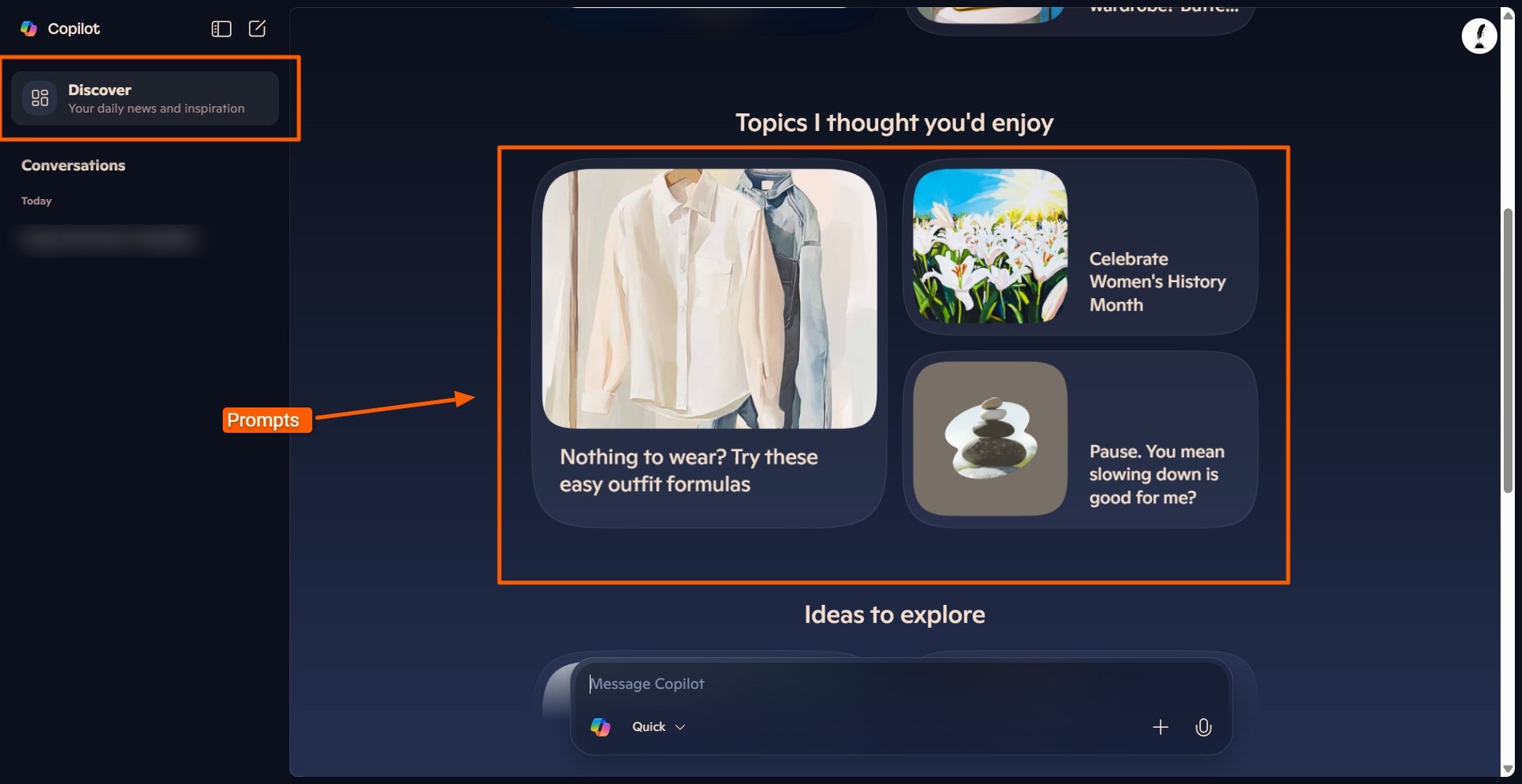
Microsoft/Copilot
The Copilot user experience inside various Microsoft Apps is far better. Copilot integrates seamlessly into every Microsoft Office app so you can streamline your workflow. For example, you can ask Copilot to draft a document inside Word.
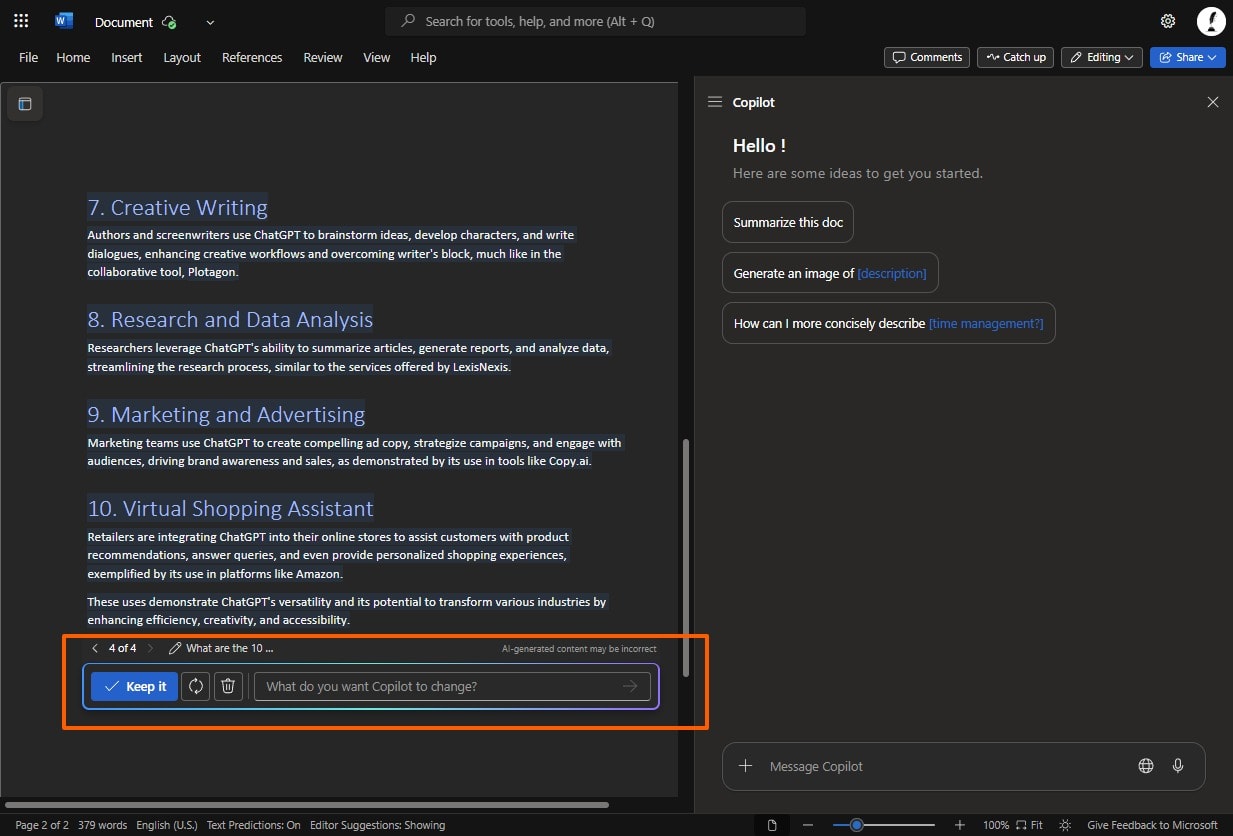
Microsoft/Copilot
Find an AI expert on Fiverr
ChatGPT
Like Copilot, ChatGPT’s interface is a simple chat window, accessible via the browser or mobile app. However, ChatGPT offers more obvious additional features, such as CustomGPTs, a Canvas for live text editing, multiple models to choose from, and a Projects section to store related documents.
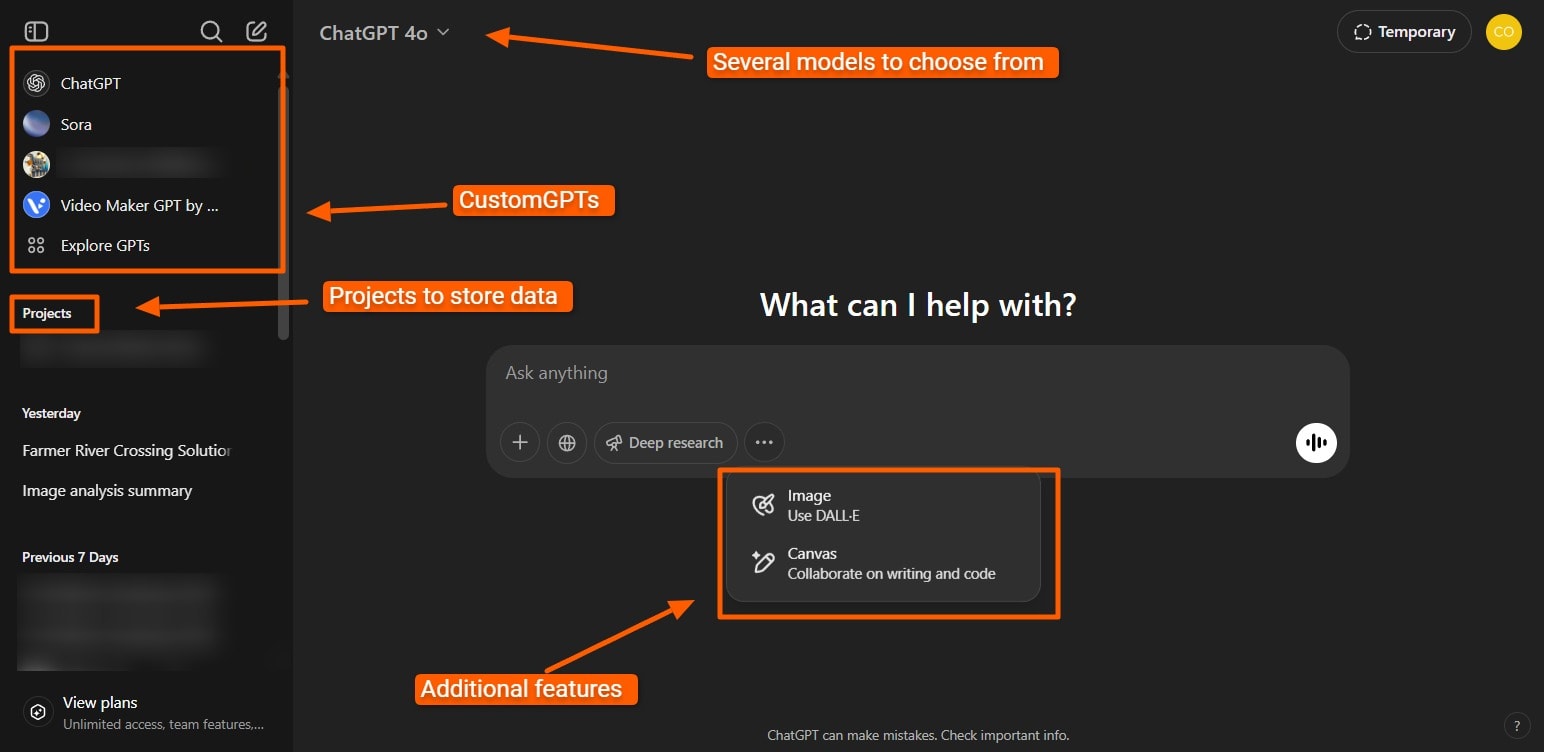
OpenAI/ChatGPT
You can also add custom instructions in ChatGPT so that it answers in ways more suited to your workflow. For example, you can give it data about your profession and your skills. You can instruct it to reply with short or long answers. If you use ChatGPT extensively, these settings save you from repeating yourself in every chat.
Copilot has no such settings.
Both tools have highly restrictive limits in their free tiers, forcing you to upgrade for regular use.
Customization and integrations
Copilot
The short answer to whether Copilot offers customization and integrations is no—at least not for everyday users.
However, a version of Copilot for work and school accounts allows customization if you’re willing to jump through a few hoops. You can create custom plugins that integrate with Copilot and use those to customize each of Copilot’s answers. The process for creating these is complex and not suited for average users.
Copilot is a tool for Microsoft loyalists. If you’re already inside the Microsoft ecosystem, you will now get a Copilot subscription as part of the deal.
ChatGPT
ChatGPT offers an API so programmers can integrate it with external tools. You can create automations and link ChatGPT to your own datasets. Additionally, Microsoft Azure has software development kits that make it easy to connect to Azure-based OpenAI APIs.
ChatGPT also lets users create CustomGPTs—standalone GPTs that follow specific instructions and can access external data. Anyone can create a CustomGPT using a familiar chat-based interface. You can connect your CustomGPT to any external data source with a few clicks.
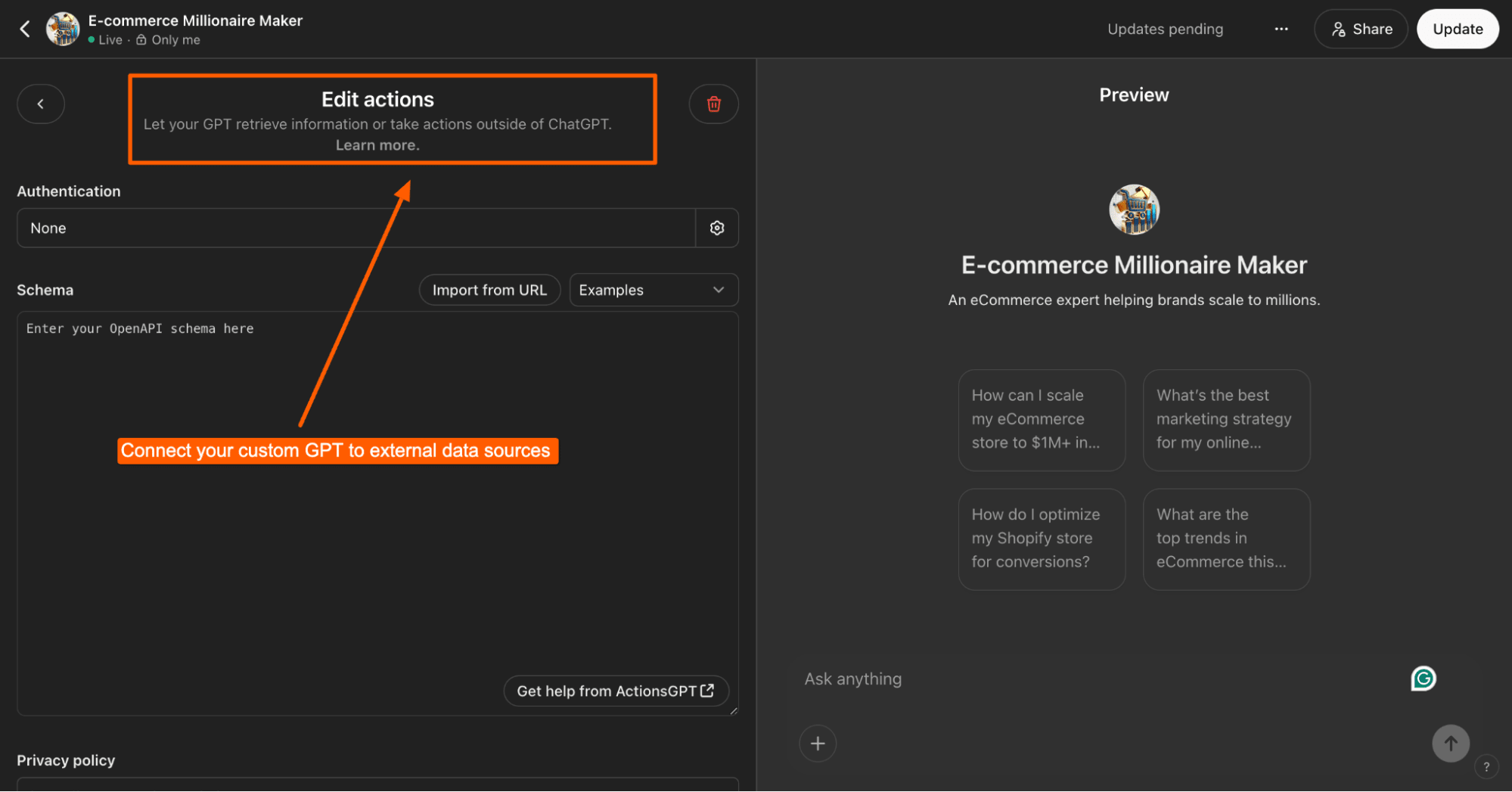
OpenAI/ChatGPT
Privacy and ethical concerns
Copilot
Copilot’s ethics concerns are the same as ChatGPT’s because Copilot is based on OpenAI’s GPT models.
As for privacy, Copilot’s largest privacy scare was Windows Recall, which took screenshots of your PC while you worked. You can then use natural language prompts to remember what you were doing. The project sparked controversy and security concerns, causing Microsoft to delay its release. However, it’s now available on a limited channel to select users.
ChatGPT
ChatGPT’s privacy practices are less transparent than Copilot’s. For example, ChatGPT automatically opts you in to improving the model for all users, which means it trains on the chats you have with it. It also opts you in automatically to its “Memory” feature, which remembers the chats you have with it so it can improve its replies over time.
OpenAI has been embroiled in numerous copyright infringement cases, including with The New York Times and multiple well-known authors. The claimants allege that OpenAI violated copyright by using their copyrighted works as training data. Evidence has also mounted to show that Sora videos are just clever modifications of underlying copyrighted images and videos.
ChatGPT’s latest release has led to even further controversy, with scathing accusations against OpenAI for reckless disregard of artistic works.
In short, ChatGPT has not been without controversy regarding its ethical practices, which was one of the reasons previous founders left OpenAI and founded Anthropic, an AI company focused on creating AI ethically.
Putting each tool to the test
Professional writing
One of AI’s weakest areas is professional writing, so calling one tool better than another in this area doesn’t inspire much confidence.
We fed the brief for this article into ChatGPT and Copilot, then asked them to write the article. The results were dismal. However, ChatGPT’s results were slightly better.
Copilot fobbed off the writing, outputting only a sentence or two for each section.
ChatGPT added a few bullet points, but the prose contained the typical and cringeworthy telltale signs of AI copy.
We’ve tested AI writing extensively for several years. From what we’ve seen, it appears that Google can’t—or won’t—really tell if AI writes something. Companies using AI for blog posts have indeed achieved excellent SEO results. However, some companies have also been penalized heavily.
Google insists that content is helpful for users, regardless of whether it was written with AI. If you use AI to write your copy, you should still have someone edit it to ensure the copy is helpful for the reader.
You can find AI content editing services on Fiverr and expert SEO services to help you decide if AI writing is the right SEO choice for you.
Coding
We gave ChatGPT and Copilot a handful of programming tasks to carry out in different programming languages. In some cases, they generated similar code. In others, they generated very different code that achieved the same thing. Almost always, the code had minor errors that a human would need to touch up.
In one case, Copilot generated more robust code than ChatGPT, while ChatGPT generated more robust code in another.
AI coding tools are precisely that—tools. They’re best used as an aid to increase output but should never be used as a complete substitute for a human.
Even if you’re doing “vibe coding,” where the AI tool does most of the coding for you, it’s best to get software development services to review that code for bugs. Failing to do so could become more expensive for you in case of a data breach.
Data analysis
Because Copilot integrates so seamlessly with the Microsoft ecosystem, it’s possible to get it to analyze sheets and documents directly inside your Microsoft account. It can even write Python code to analyze your Excel spreadsheets, as shown in the screenshot below.

Microsoft 365
We also gave Copilot two riddles to solve, which ChatGPT got wrong, and Copilot solved them correctly.
ChatGPT performed well when we asked it to analyze the same sheet above, and it also used Python code for advanced analysis. Unfortunately, the lack of direct integration in Excel makes it slightly more cumbersome to work with because you have to copy/paste to and from ChatGPT.
Copilot is the natural choice if you want to use it inside Microsoft Excel. However, if you’re determined to use ChatGPT’s cutting-edge models instead, you can get AI programming services to build a tool that can do this for you.
Hire AI specialists on Fiverr today
AI is evolving so rapidly that it’s challenging for tech people to keep up.
The way to set yourself apart in AI is to leverage it to its maximum, which requires skill.
Fiverr’s AI freelancers can give you this cutting-edge. Fiverr has experts in AI consulting, AI development, AI integration, and many other AI services. The platform also has experts who can help you where AI falls short, such as in professional writing or cybersecurity consulting.
No matter what service your business needs, Fiverr likely has pros to help you with it.
Getting started on Fiverr is easy. Sign up for a free account and search for the right freelancer today.
Find an expert chatbot developer on Fiverr
Copilot vs ChatGPT FAQs
Is Copilot better than ChatGPT?
Copilot is an AI tool developed by Microsoft that uses the Microsoft Prometheus AI model based on OpenAI’s GPT models. Copilot and ChatGPT are powerful AI tools for everyday use, although ChatGPT has more bells and whistles. Copilot’s primary strength is that it integrates deeply with the Microsoft ecosystem.
Is there a better AI than ChatGPT?
Several competitors exist in the AI sector, and each claims to be better than the other. Many AI vendors use benchmark tests to determine the ability of their AI tools. These benchmarks offer a distorted picture at best. The benchmarks might or might not directly correlate to effective everyday use cases.
The following are all excellent AI tools in different areas: Perplexity, Copilot, Gemini, Claude, Grok, Llama, and ChatGPT.
What are the drawbacks of Copilot?
Copilot’s primary purpose is to integrate deeply with the Microsoft ecosystem. Its web interface lacks many of the bells and whistles of ChatGPT, but its overall performance is generally excellent.
What app is better than Copilot?
Copilot is unique in that it integrates deeply with the Microsoft ecosystem. No other AI tool on the market does this. That being said, Copilot lacks many integration capabilities other tools offer.
